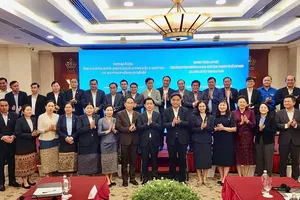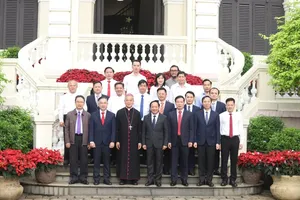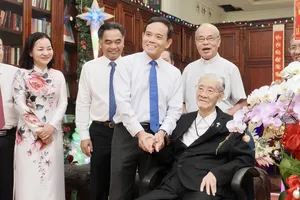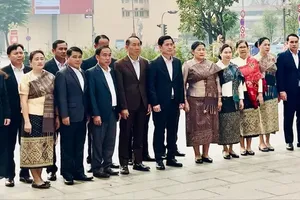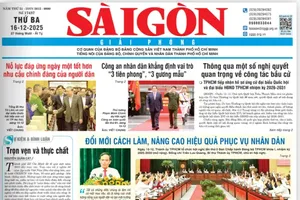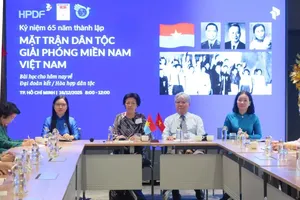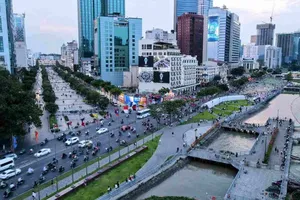On the morning of May 22, the Steering Committee for the Ho Chi Minh City Urban Railway Network Development held its first working session, presided over by Nguyen Van Nen, Secretary of the Ho Chi Minh City Party Committee.
Among attendees were Member of the Party Central Committee, Standing Deputy Secretary of the Ho Chi Minh City Party Committee and Deputy Head of the Steering Committee Nguyen Thanh Nghi; and Member of the Party Central Committee, Deputy Secretary of the Ho Chi Minh City Party Committee, Chairman of the Ho Chi Minh City People's Committee, and Standing Deputy Head of the Steering Committee Nguyen Van Duoc.
Additional planning for urban railway network
After merging with Ba Ria-Vung Tau and Binh Duong, the demand and potentiality for development of the urban railway network in the new administrative unit, retained the name Ho Chi Minh City, will increase significantly.
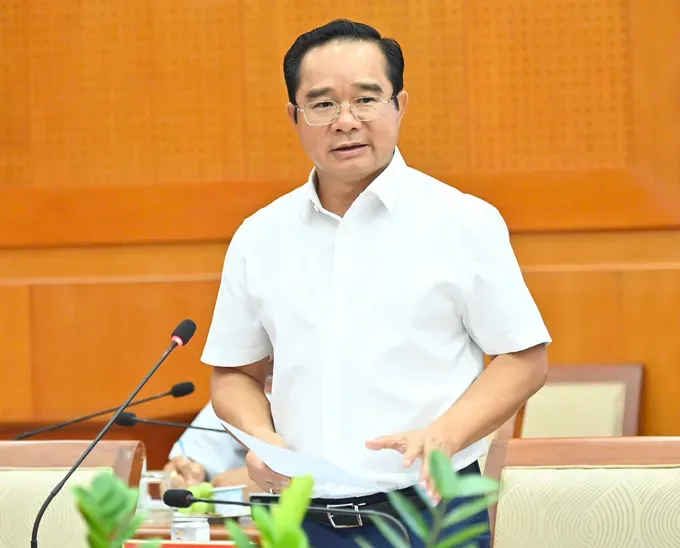
According to Chairman of the Ho Chi Minh City People’s Committee Nguyen Van Duoc, it is necessary to re-plan the railway system, adding and extending railway lines to reach provinces of Binh Duong, Dong Nai, Ba Ria - Vung Tau and Tay Ninh.
Speaking at the working session, Chairman of the municipal People’s Committee Nguyen Van Duoc emphasized that amidst Ho Chi Minh City’s administrative unit expansion, including a merger with Ba Ria-Vung Tau and Binh Duong provinces, the demand for development of the urban railway system has become increasingly urgent.
The city needs to re-plan and extend metro lines to neighboring provinces, including localities of Dong Nai, Ba Ria-Vung Tau and Tay Ninh.
Metro expansion will create momentum to attract investment and develop urban areas by the Transit-Oriented Development (TOD) model.
Chairman Nguyen Van Duoc also called for studying a new management model for the Management Authority for Urban Railways (MAUR) and expanding capital mobilization from domestic and foreign investors, combining the official development assistance (ODA) funding and the state budget.
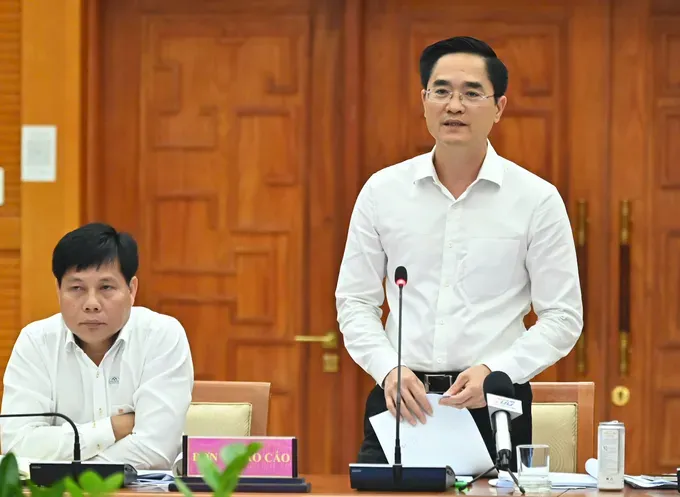
As reported by Acting Director of the Ho Chi Minh City Department of Construction Tran Quang Lam, the city sets a target of completing approximately 355 kilometers of urban railway by 2035, with a total estimated investment of US$40.2 billion.
By 2045, Ho Chi Minh City plans to build an additional 155 kilometers of urban railway, excluding metro lines connecting the city center to Can Gio District with a length of about 48.7 kilometers and from Thu Thiem to Long Thanh with a length of about 41 kilometers.
The acting Director of the Ho Chi Minh City Department of Construction indicated that the development of the city's urban railway system has made significant progress thanks to special policies and mechanisms aligned with local realities and current laws, a diverse capital mobilization strategy, including funding from the central and local budgets, ODA loans, bonds and both domestic and international loans, helping to secure the necessary resources for infrastructure projects.
Additionally, the Prime Minister is authorized to allocate medium-term capital, not exceeding VND209.5 trillion (US$8 billion) for the 2026–2035 period, while the Ho Chi Minh City People’s Council is tasked to decide on the annual allocation from local budget funds based on legally increased revenue and savings.
Under the mechanism, the steps involved in investment procedures in Ho Chi Minh City are now clearly defined, including project documentation, appraisal, approval of inspection and supervision, ensuring both projects progress and effectiveness. The Ho Chi Minh City People’s Committee is authorized to adjust project progress, architectural plans and select contractors to suit practical conditions.
In addition, the urban development policy by the model of multi-objective TOD planning is driving the growth of vibrant hubs around metro stations. This model promotes efficient land use, mobilize Public-Private Partnerships (PPP) capital, reduce personal vehicle traffic and develop sustainable urban areas.
Policies supporting the railway industry, technology transfer and the training of high-quality human resources help enhance domestic capabilities and reduce dependence on foreign partners; and regulations on construction materials along with waste disposal meet environmental standards and encourage the use of green materials.
As for the financial management, fee collection, commercial and service activities help maintain and expand the urban railway network, while relevant agencies have well-outlined roles and duties, which helps improve coordination, accountability, and operational efficiency.
The policies also depend on international experience, aiming to remove obstacles and establish a clear legal framework that encourages investment, construction and operation of the city’s future metro system.
Strategic task in transportation
Delivering the concluding remark, Secretary of the Ho Chi Minh City Party Committee Nguyen Van Nen emphasized that the working session reached a basic consensus on several key issues for implementing the urban railway development plan, in line with Conclusion No. 49 of the Politburo.
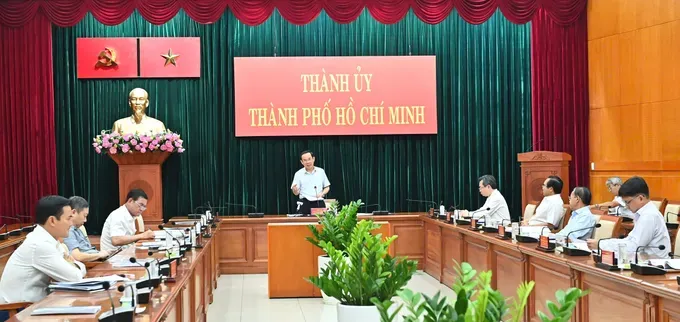
The city Party chief also highlighted the implementation plan for special mechanisms and policies, particularly for the development of urban railway systems in the capital city of Hanoi and Ho Chi Minh City, as outlined in Resolution No.188 of the National Assembly (NA), which authorizes a pilot of special mechanisms and policies for these two big cities.
Regarding the development of the railway network in general and urban railways in particular, Secretary Nguyen Van Nen noted that this is a strategic breakthrough mission in transportation, as affirmed by the Politburo in Conclusion No. 49, comprising a goal of completing Ho Chi Minh City's urban railway network by 2035.
Amid the merger with Binh Duong, Ba Ria–Vung Tau provinces, Ho Chi Minh City is facing new opportunities for developing both socio-economic infrastructure in general and transport infrastructure in particular.
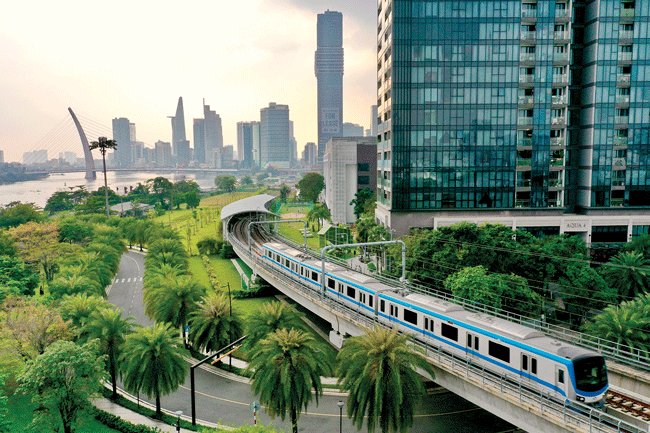
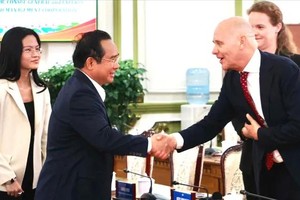
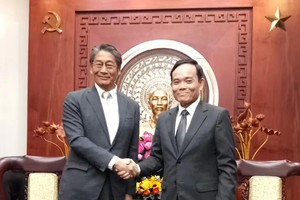
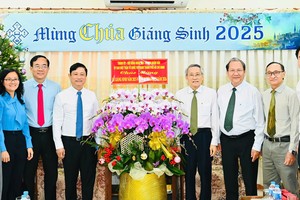
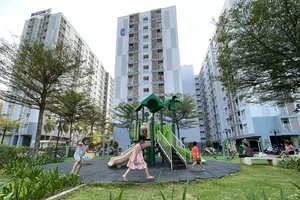

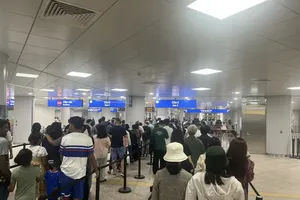
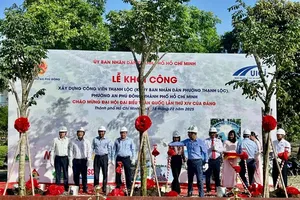
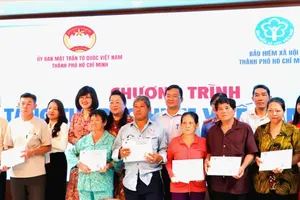
)
